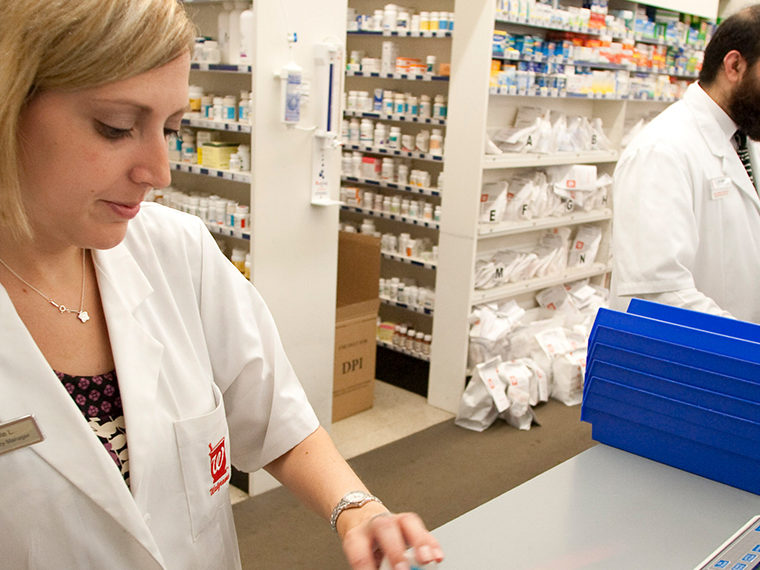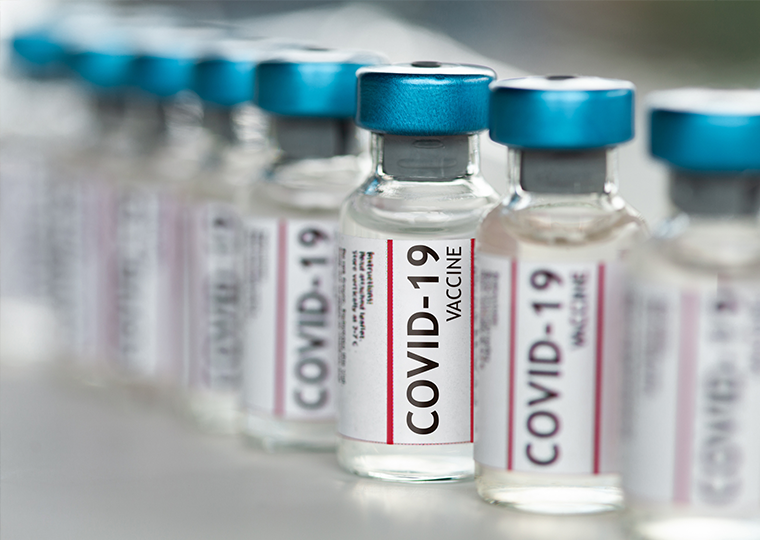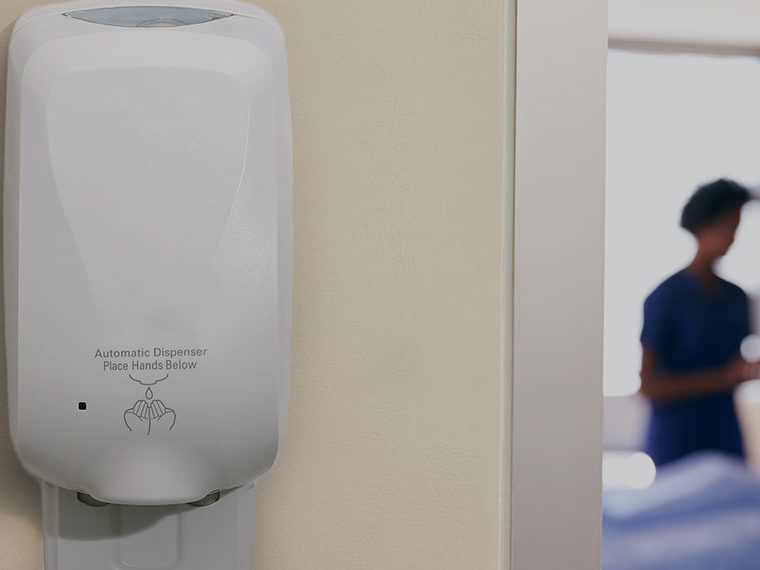Informed by personal experience, a researcher parses data to help those mulling mastectomy and gynecological surgeries
Elisa Long was 33 years old and new to the UCLA Anderson faculty when her research and her life grimly intersected. Specializing in medical decision making under uncertainty, she routinely studied how to weigh difficult decisions, often in the absence of complete information. Newly diagnosed with breast cancer — she would soon learn that she is also a BRCA1 mutation carrier — Long was confronted with a critical dilemma of her own: How long could she delay prophylactic surgery to remove healthy organs and still avoid further cancer and risk to her life?
Up to 65 percent of women with BRCA1 gene mutations and 45 percent of women with BRCA2 mutations develop breast cancer by age 70, compared to 12 percent in the general population. Nearly half of breast cancers in BRCA mutation carriers occur before the age of 50. Two-thirds of women with BRCA1-related breast cancers develop triple-negative tumors, making them immune to the most effective cancer treatments. A BRCA1 mutation also raises the lifetime risk of ovarian cancer, a particularly deadly disease, to 39 percent from about 1.5 percent. For BRCA2 mutation carriers, the risk of ovarian cancer rises to between 11 and 17 percent.

Knowing these risks, a mutation carrier faces hard choices. She can dramatically reduce her cancer risks with surgeries to remove breasts and/or ovaries and fallopian tubes before any disease appears. Complications from bilateral mastectomy and reconstruction surgeries are common. The gynecological surgery, called bilateral salpingo-oophorectomy, induces menopause and ends fertility. For most carriers, there’s no way to know whether a long, cancer-free life is possible without surgeries, or if those procedures would be lifesaving.
Opt In to the Review Monthly Email Update.
In an interview, Long says her own decision for bilateral mastectomy was fairly straightforward; her gene mutation was discovered shortly after a diagnosis of triple-negative breast cancer. But as a young woman who hoped to one day become a mother, she wanted to keep her reproductive organs as long as possible. How many years would be too long?
Long wanted data. She says she is most comfortable applying math to real-world problems, a habit reinforced by marriage to a behavioral economist with similar tendencies. As she describes it, even their take-out dining decisions are data-driven.
So she asked the doctors: Statistically, what would be the best age for me to undergo oophorectomy to avoid ovarian cancer? How would my cancer odds change if I delayed the surgery for five years?
Long found that no one — neither professionals at national cancer organizations nor the top BRCA experts at a dozen medical centers she consulted — could give her definitive answers. No established guidelines exist to advise BRCA mutation carriers of optimal ages for each surgery. The advice she heard most often, which included prophylactic salpingo-oophorectomy after completing childbearing, made no distinction between BRCA1 and BRCA2 mutation carriers, despite their starkly different risk factors, and did not consider the effect of these surgeries on quality of life.
“What scared me the most, when I asked about when I should have surgeries, was that I got a lot of different answers,” Long recalls. “I am trained in statistics and making medical decisions under uncertainty, and I felt overwhelmed.”
Long enlisted the help of Eike Nohdurft and Stefan Spinler from the Kühne Institute of Logistics Management at WHU in Germany, two colleagues she had worked with on a previous study that predicted Ebola cases in different locations in West Africa, using data from the 2014-2015 epidemic. Together, the three researchers turned her medical dilemma into a cold hard research question: At what ages should BRCA gene mutation carriers undergo prophylactic surgeries for optimal survival and quality of life?
Two years later, they have produced some answers.
Personalized Cancer Risks
The model that Long, Nohdurft and Spinler developed applies not just to Long’s situation, but to any woman who carries the BRCA1 or BRCA2 gene mutations. Customized for each carrier’s health status, the model potentially answers the questions: How do my odds of cancer change if I have bilateral salpingo-oophorectomy at age 28 versus 38, or any other age? How much are the odds reduced if I only have bilateral mastectomy? What if I never have surgery? And also: Given the downsides to each surgery, what are the optimal ages to undergo each, if at all?
The study, “Was Angelina Jolie Right? Optimizing Cancer Prevention Strategies among BRCA Mutation Carriers,” appeared in the September 2017 edition of Decision Analysis, an academic journal dedicated to research that establishes rational steps for making complicated decisions. (Jolie, a BRCA1 mutation carrier, famously made public her own decision to have both surgeries prophylactically in her late 30s.)
The model can’t tell a woman whether she will or will not get a future diagnosis of cancer, Long explains. But it does allow her to see how her personal odds change if she chooses, or declines, certain prophylactic surgeries now. It shows how a woman’s cancer risks change with her health and her age, in a way that Long found lacking in her own search for advice.
For example, a 30-year-old carrier who undergoes prophylactic oophorectomy will lower her risk of ovarian and breast cancer, but not as much as a woman who also undergoes prophylactic bilateral mastectomy. The model incorporates the odds for more than four million different health states, changing the statistical prognoses again for each prophylactic surgery.
In its current state, a statistician or other mathematically inclined professional is required to manipulate the model. But the researchers are working on a tool, possibly an app, that will allow individual carriers to enter their personal data and determine optimal ages for surgeries for themselves. They hope to have the program operational before the end of 2018.
“I’ve thought a lot about how I wish I could take this experience and scale it up to help more people,” Long says. “Our ultimate goal of building an online tool is to make it as easy as possible for a woman to compare different strategies, personalized to her based on the latest available data, so that she can make an informed decision.”
Accounting for Trade-Offs: Fertility or Peace of Mind?
If the sole goal of every woman with the BRCA mutation were to reduce her cancer risk as much as possible, Long explains, the recommendation would be unequivocal: All carriers would have both surgeries at age 18. But of course Long doesn’t advocate that, because the decision is never that simple. Some women would rather live with the cancer risks than endure possibly unnecessary surgery. Some will move up plans to get pregnant and then schedule prophylactic surgeries after giving birth and breastfeeding. For others, peace of mind is worth the fertility and quality of life concessions that mastectomy and oophorectomy require.
Long wanted to incorporate the likely quality of life impacts from each procedure into the surgical strategy recommendations — guidance for whether or when to undergo bilateral mastectomy, bilateral salpingo-oophorectomy, both surgeries or neither —that the model would ultimately produce.
So the researchers looked at survey data that asked BRCA mutation carriers to rate these surgeries’ detrimental effects, including cosmetic issues, the end of fertility and side effects of early menopause. The study accounts for these variances in quality of life over time, assuming, for example, that a mastectomy creates a temporary reduction and an oophorectomy reduces quality of life until a woman would otherwise be in natural menopause around age 50. The model’s objective is to maximize future quality-adjusted life years, or QALYs, which captures both the length of life and average quality of each year.

Mastectomy first is the better option for carriers to maximize quality-of-life years, primarily because breast cancer more often occurs at a younger age than ovarian cancer. For BRCA1 mutation carriers with no prior cancer history, the findings recommend bilateral mastectomy between the ages of 30 and 60, along with bilateral salpingo-oophorectomy after age 40. Mastectomy after age 60 does not add to QALYs for these carriers, according to the study, because of its increased risk of surgical complications, post-surgery recovery time and diminished average quality of life.
For BRCA2 mutation carriers with no prior cancer history, the findings suggest first undergoing bilateral mastectomy between ages 40 and 46, after which the surgery does not maximize QALYs. The oophorectomy is recommended after age 49.
The researchers made these recommendations purposely broad, hoping to add guidance without presuming that a statistical model should make the decision for anyone, Long explains. She notes that individual opinions on quality of life issues could change those recommendations.
“As a woman who has undergone both of these surgeries, I personally think there are other important considerations. There is no one-size-fits-all policy for all women,” Long says. “What I feel is currently missing is a simple-to-understand comparison of the trade-offs. For example, if I’m a 30-year-old woman deciding whether to have one or both surgeries, I would like to know: What are the chances of getting breast or ovarian cancer if I delay my decision by five years? Is the risk 2 percent or 20 percent or 80 percent?”
Dicing the Data
While science can’t predict exactly who will and won’t get cancer, hundreds of studies demonstrate that some individuals are more vulnerable than others. Long and her colleagues incorporated into their calculations key risk differences in carriers that much of the research on BRCA mutations does not.
They first separated the statistics on BRCA1 and BRCA2. BRCA1 generally carries a higher likelihood of cancer, at younger ages, than BRCA2 mutations, but the general medical advice about prophylactic surgeries tends to be the same for both, Long says.
The National Comprehensive Cancer Network, the only major cancer organization Long found to offer specific guidance when she needed advice, called for prophylactic removal of fallopian tubes and ovaries between the ages of 35 and 40, and upon completion of childbearing. At the time of the study, the recommendation was the same for both BRCA1 and BRCA2 mutation carriers. (NCCN has since modified these recommendations, stating that a surgery delay to age 40 to 45 is reasonable for BRCA2 mutation carriers.) The organization does not specify a recommended age for bilateral mastectomy in its guidance.
Long and her colleagues also incorporated a woman’s history of cancer into their risk calculations. They classified breast cancers by stage and subtype, as the specifics of these diseases present radically different prognoses for patients. For example, luminal A breast cancers are often curable, with an 85 percent, five-year survival rate when diagnosed at stage III, and over a 98 percent survival rate if diagnosed at stage I. Stage III triple-negative breast cancer, on the other hand, has only a 48 percent, five-year survival rate.
The researchers included data on how cancer risks change with age, and how treatable the disease is likely to be when discovered. Breast cancer diagnoses peak around 40 for BRCA1 mutation carriers and around 50 with BRCA2, according to research published in JAMA in 2017.
The majority of ovarian cancers are diagnosed after age 55. While screening can catch most breast cancer early, it is unlikely to find ovarian cancer before the disease progresses to stage III or IV, when it is often terminal.
The model can adjust recommendations as cancer treatments become more effective, and as science gets better at determining which carriers are most at risk, Long says. Ongoing research, for example, has found links between higher cancer rates and mutations at certain spots on the BRCA gene sequence. (“Think of it like pages in a book,” Long says. “Say my mutation is on page 472, line 3. We now know that people who have mutation in this place have a higher risk of ovarian cancer.”) Incorporating the location of a woman’s mutation, when available, affects the model’s ultimate recommendation.
Living with Uncertainty
Long began fertility treatment to harvest her eggs within 24 hours of her cancer diagnosis. She has seven healthy embryos that do not carry her BRCA mutation waiting in a sub-zero vault in Beverly Hills. A couple of months after her diagnosis, she won two cars on The Price is Right. Later, she wrote about the emotional and statistical challenges of both experiences in an op-ed piece for the Washington Post. She had her ovaries and fallopian tubes removed at age 34, before the model pegging recommended ages was finished. Surgery was the right decision, she says, as she has since learned that her gene mutation is located in a cluster of ovarian cancer. She just celebrated three years cancer free.
BRCA mutations account for about 5 to 10 percent of breast cancers, according to other research by Long and Dr. Patricia Ganz of UCLA’s Fielding School of Public Health. One in 400 women are believed to carry BRCA gene mutations, and the numbers rise to one in 50 among women of Ashkenazi Jewish descent. Their 2015 study concludes that universal screening for BRCA, including women with no risk factors, is not cost-effective based on current test prices.
Yet Jolie’s description of her own decisions for prophylactic surgeries, published in a 2013 New York Times op-ed, led to a sustained increase in the number of women who are tested for BRCA gene mutations, according to a study published in the British Medical Journal in 2016. Although test results may be definitive, the best way to act on the information is much less clear.
Long stresses that a model can only estimate the average risk that any carrier will develop cancer, not identify who will or will not suffer the disease. Some women who plan to follow its guidance for prophylactic surgeries will be diagnosed before they reach the recommended ages. A model cannot eliminate the randomness of cancer.
“At the end of the day, as a form of survival, you adapt [to uncertainty],” Long says. “We use the best numbers that we have.”
Featured Faculty
-
Elisa Long
Associate Professor of Decisions, Operations, and Technology Management
About the Research
Nohdurft, E., Long, E., & Spinler, S. (2017). Was Angelina Jolie right? Optimizing cancer prevention strategies among BRCA mutation carriers. Decision Analysis, 14( 3), 139–169. doi: 10.1287/deca.2017.0352
Long, E. & Ganz, P. (2015). Cost-effectiveness of universal BRCA1/2 screening: Evidence-based decision making. JAMA Oncology, 1(9), 1217–1218. doi:10.1001/jamaoncol.2015.2340.






